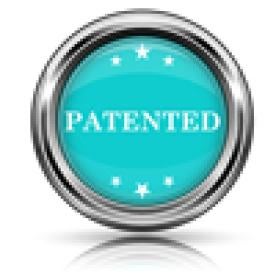Takeaway: Merely being designated “highly confidential” by the opposing party in a related district court case is not sufficient to demonstrate good cause to seal documents in an IPR. If a party asserts that a portion of the other party’s submission is confidential, then that other party should file the information as a confidential exhibit and the first party should file a corresponding motion to seal.
In its Decision, the Board denied Patent Owner’s revised motion to seal (Paper 22) and granted Petitioner’s motion to expunge and replace (Paper 28). Previously, the Board issued an order providing guidance as to the requirements for a motion to seal. Patent Owner thereafter filed a motion to seal two deposition transcript exhibits from related district court litigation.
The Board denied the motion because “Patent Owner failed to provide any explanation as to why any of the information constitutes confidential information according to our rules or to establish good cause as to why the motion should be granted.” That decision provided further guidance as to the requirements for a motion to seal and directed Patent Owner to Garmin Int’l, Inc. v. Cuozzo Speed Techs., LLC, IPR2012-00001, Paper 34, 4-5 (March 14, 2013):
In Garmin, the Board explained that a motion to seal should: 1) specify which portions of information in each exhibit sought to be sealed constitute confidential information under our rules and why; 2) explain why good cause exists to place the confidential information under seal; and 3) certify that none of the alleged confidential information has been made publicly available.
Patent Owner thereafter filed its revised motion to seal. Again, however, “Patent Owner’s revised motion to seal did not include any explanation as to why all of the information in the 192 pages of exhibit 2023 or the 135 pages of exhibit 2024 constitutes confidential information under our rules.” Patent Owner’s revised motion to seal “also did not include an explanation as to why good cause exists to place the confidential information under seal. Instead, Patent Owner indicated that it intends to seek a ruling from the judge in the related district court case that the deposition transcripts are not confidential pursuant to a protective order in that case.” To that end, Patent Owner “submitted that good cause exists for the Board to defer ruling on Patent Owner’s Motion to Seal and to maintain [e]xibits 2023 and 2024 under seal until the United States District Court for the Southern District of New York has ruled on the [c]onfidentiality of this material.” Petitioner, on the other hand, filed a motion to replace and expunge the exhibits, or in the alternative seal them.
The Board first addressed Patent Owner’s revised motion and denied it. Patent Owner “failed to carry its burden to show that the entirety of the information contained in replacement exhibits [] is confidential according to our rules and to show that that [sic] there is good cause for sealing replacement exhibits [].” Indeed, Patent Owner indicated “that it considers none of the information . . . confidential.” A “‘highly confidential’ designation in a related district court case is not sufficient to demonstrate good cause to seal documents in this proceeding.” In sum, “Patent Owner should not file a motion to seal unless it believes that the information sought to be sealed should be sealed, even if that information is not Patent Owner’s confidential information.”
The Board next addressed Petitioner’s motion to expunge sealed exhibits and replace them with unsealed exhibits. Regarding the exhibits, a portion of which was relied on by the Patent Owner, the Board “decline[d] Patent Owner’s invitation to determine whether or not the extensive amount of un-relied upon information is confidential to the district court protective order, and properly leave that to the district court judge. The Board provided further guidance:
Given the current dispute and circumstances of this case, the possibility of future reliance on the extensive remaining information in these exhibits is too speculative to justify determining at this time whether all of the information is or is not confidential pursuant to our rules. We expunge exhibits 2010, 2011, 2023, and 2024 from the record and replace them with unsealed exhibits 1015 and 1016.
Thus, the Board granted Petitioner’s motion to expunge and replace, thereby mooting Petitioner’s alternate motion to seal.
Finally, the Board provided guidance for the parties’ future conduct. Specifically, “[i]f Petitioner asserts that the portion [of Patent Owner’s submission] is confidential, then Patent Owner should file the information as a confidential exhibit and Petitioner should file a corresponding motion to seal.” In light of the extensive guidance provided by the Board on this subject in the proceeding, “any future motions to seal that include only conclusory arguments or that request sealing of information that the producer does not consider to be confidential pursuant to our rules, may be deemed a frivolous request for relief” and “the Board may impose sanctions.”
Product Miniature, Inc. v. POP Displays USA, LLC, IPR2015-00266
Paper 33: Decision Denying Motion to Seal and Granting Motion to Expunge and Replace
Dated: August 10, 2015
Patent: 8,646,935 B2
Before: Meredith C. Petravick, Hyun J. Jung, and Neil T. Powell
Written by: Petravick
Related Matter: POP Displays USA, LLC v. Product Miniature, Inc. et al., Case No. 1:14-cv-03639-ER (S.D.N.Y.)



 i
i

